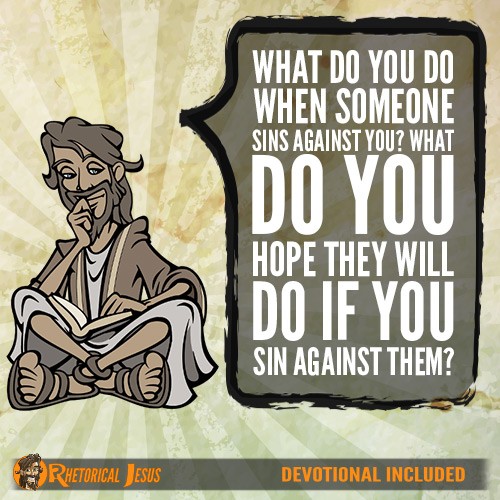John 8:10-11
Jesus stood up and said to her, “Woman, where are they? Has no one condemned you?” She said, “No one, Lord.” And Jesus said, “Neither do I condemn you; go, and from now on sin no more.
A Self-Righteous Double Standard
The Scribes and Pharisees brought a woman caught in the act of adultery and put here before Jesus. My question is where was the man? Why was he not also brought before Jesus? Wasn’t he also caught in the act since two are needed to commit adultery? Isn’t this a double standard to bring and accuse the woman but not the man? Anyway, they brought this woman before Jesus, and I believe they did this on purpose. They wanted to use this opportunity to trap Jesus, and I’ll explain why I say that in the next paragraph. The Scribes and Pharisees, natural enemies of one another but coming together here because of their common enemy in Jesus, told Jesus that the Law of Moses demands that this woman be stoned and questioned Jesus (John 8:4-5). Again, shouldn’t the man be there and be stoned under the law, too? But they were apparently more prejudiced against women than men. Jesus, though, was no respecter of persons. They didn’t really care about the woman or justice because their motive was to trap or test Jesus (John 8:6a).
Cast the First Stone
They kept asking Jesus about stoning this woman, but He remained silent for a time. All He did at first was bend down and begin to write something in the dirt (John 8:6b). What was He writing? He surely wasn’t just doodling or wasting time. They kept on asking Him over and over again, when He suddenly stood up, and the language structure in the Greek suggests that He stood up against them in a position of anger. Then He said, “Let he who is without sin among you throw the first stone” (John 8:7). One by one, beginning with the older (because being older they had more sin) and then the younger (with less sin), they began to leave. Because all have sinned, they all had to leave (Rom 3:23). What was Jesus drawing on the ground? Was it the sins of those who were there? Was it the names of those who were there? Or did Jesus draw their names and their sins in the dirt? I can only speculate, but it does make you wonder because Jesus knows every man’s heart and knew their nature (John 2:24).
The trap they hoped to set Jesus in was that if Jesus said no, she shouldn’t be stoned, they would argue that Jesus is going against the Law of Moses, but if He said yes, stone her, they would go to the Roman authorities and accuse Jesus of breaking Roman laws where only the Romans could put someone to death and not the Jews. What a clever trap, but Jesus saw right through it and foiled them again!
He Didn’t Condone Sin
Many people use this story as permission to sin and not be judged. They argue that if Jesus didn’t condemn the woman caught in the act of adultery, then Christians shouldn’t be judging others who do such things. What most of these people who want to excuse their sin are missing is that Jesus didn’t condemn her, but He told her to “go and sin no more” (John 8:11). Jesus didn’t say “well, I can’t judge you since all sin” or “it’s okay, you’re only human”; rather, He said to now go and stop sinning. Jesus must have known that the woman was repentant, and since He knew her heart and that she was not going to sin anymore, there is evidence that she wasn’t going to continue in that lifestyle, so Jesus let her go and just told her to sin no more.
A Closing Prayer
Lord God, my Father, I cannot cast stones at anyone unless it would be at me. I know that You want me to go and sin no more, and when I do sin (not “if,” but “when”), I can come and confess it to you and you’ll cleanse me (1 John 1:9). For that I thank You, in Jesus’ name.
Amen
Republished by Blog Post Promoter





